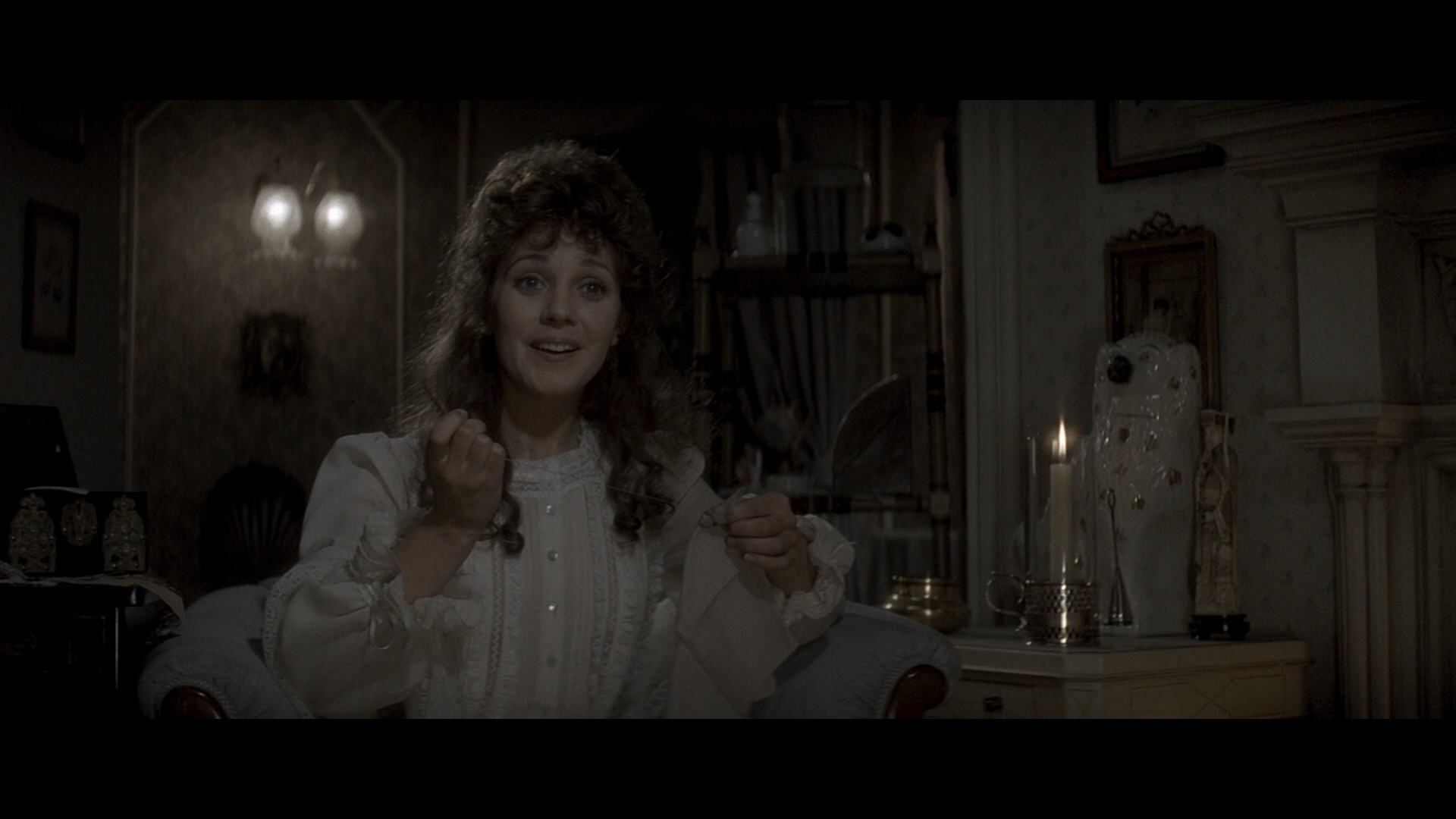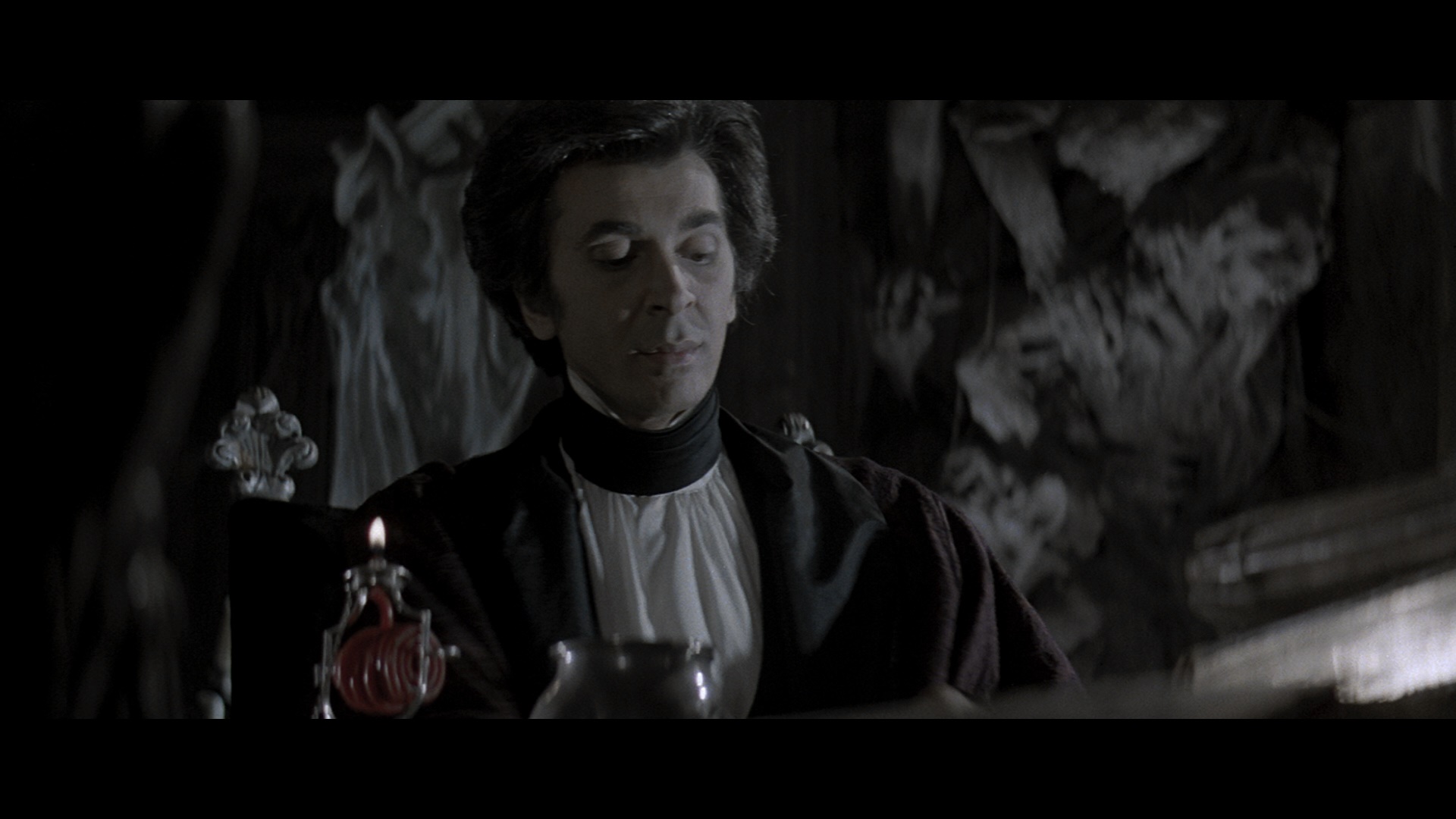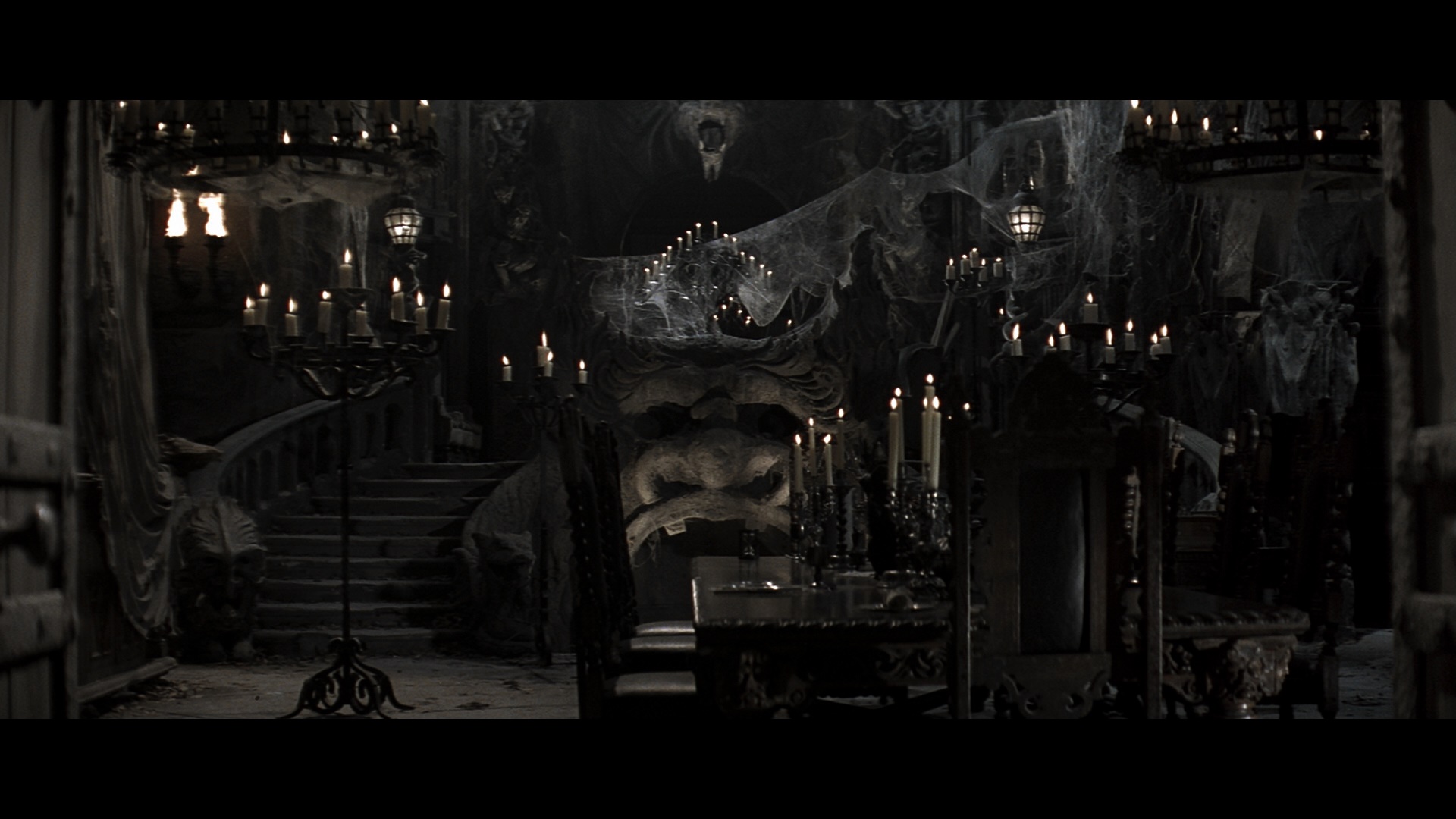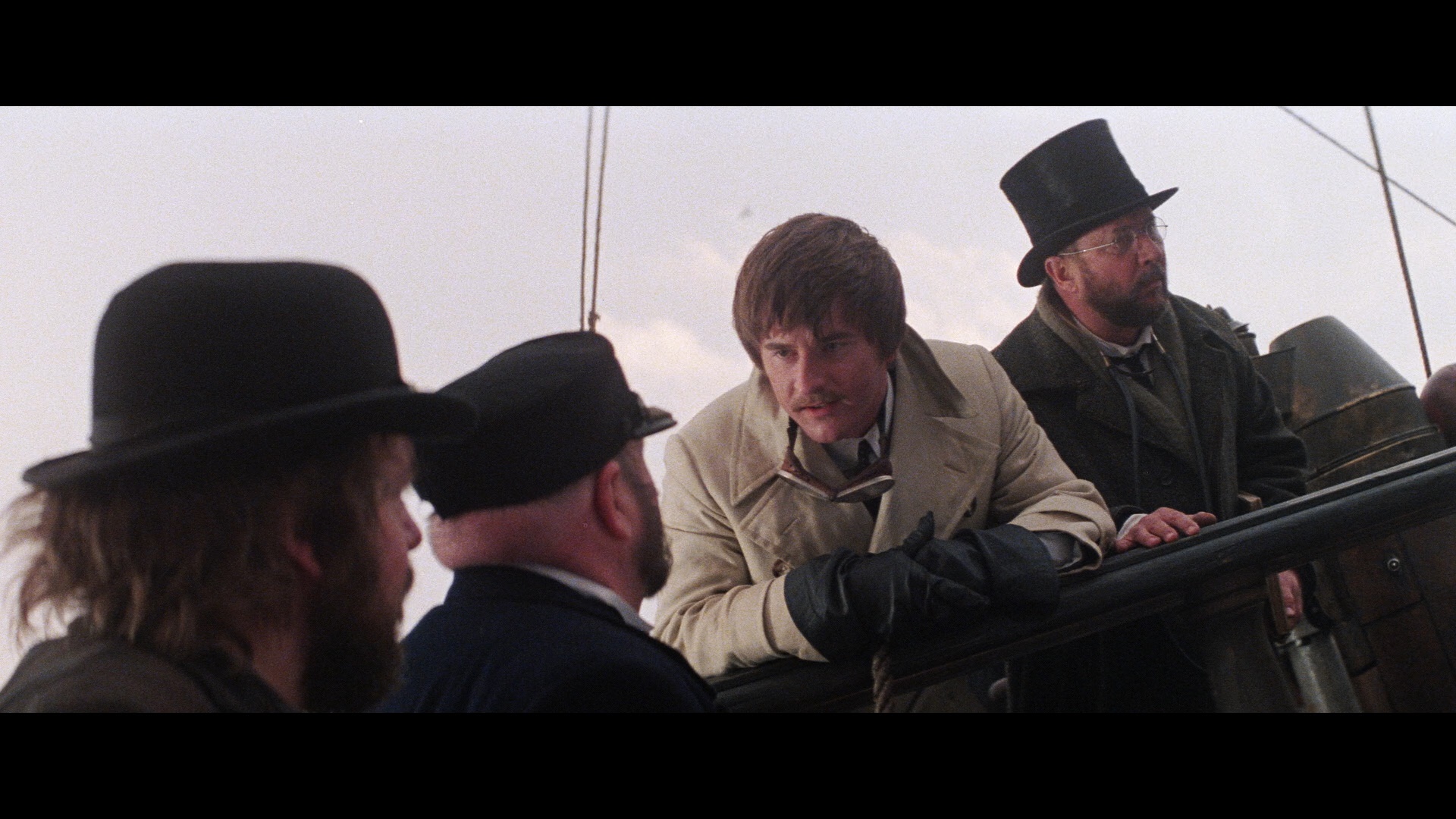

Color, 1979, 109 mins. 6 secs.
Directed by John Badham
Starring Frank Langella, Kate Nelligan, Laurence Olivier, Trevor Eve, Donald Pleasence, Jan Francis
Scream Factory (Blu-ray) (US RA HD), Universal, Image Entertainment (Blu-ray & DVD) (US R0 NTSC) / WS (2.35:1) (16:9)
 the very crowded vampire movie
the very crowded vampire movie  year of 1979, the biggest studio production of them all was this lavish adaptation of Bram Stoker's Dracula as filtered through the same stage production by Hamilton Deane and John L. Balderston that gave birth to Bela Lugosi's legendary portrayal. In this case the title role of Dracula was played by Frank Langella, who had made a tremendous impression on Broadway in a revival of the play featuring striking black-and-white sets designed by the great Edward Gorey. The resulting film from Universal proved to be divisive due to its significant changes from the familiar story ended up underperforming at the box office despite a major publicity push (along with its other big horror release soon after, The Legacy); however, it deservedly earned a number of admirers and made a strong impression among younger horror fans at the time. Now easier to appreciate when it isn't lost in the tide of other vampire films around the same time (like Love at First Bite, Nosferatu the Vampyre, Salem's Lot, etc.), this visually stunning and still underappreciated gem stands as a fine example of big budget classic horror done well.
year of 1979, the biggest studio production of them all was this lavish adaptation of Bram Stoker's Dracula as filtered through the same stage production by Hamilton Deane and John L. Balderston that gave birth to Bela Lugosi's legendary portrayal. In this case the title role of Dracula was played by Frank Langella, who had made a tremendous impression on Broadway in a revival of the play featuring striking black-and-white sets designed by the great Edward Gorey. The resulting film from Universal proved to be divisive due to its significant changes from the familiar story ended up underperforming at the box office despite a major publicity push (along with its other big horror release soon after, The Legacy); however, it deservedly earned a number of admirers and made a strong impression among younger horror fans at the time. Now easier to appreciate when it isn't lost in the tide of other vampire films around the same time (like Love at First Bite, Nosferatu the Vampyre, Salem's Lot, etc.), this visually stunning and still underappreciated gem stands as a fine example of big budget classic horror done well. 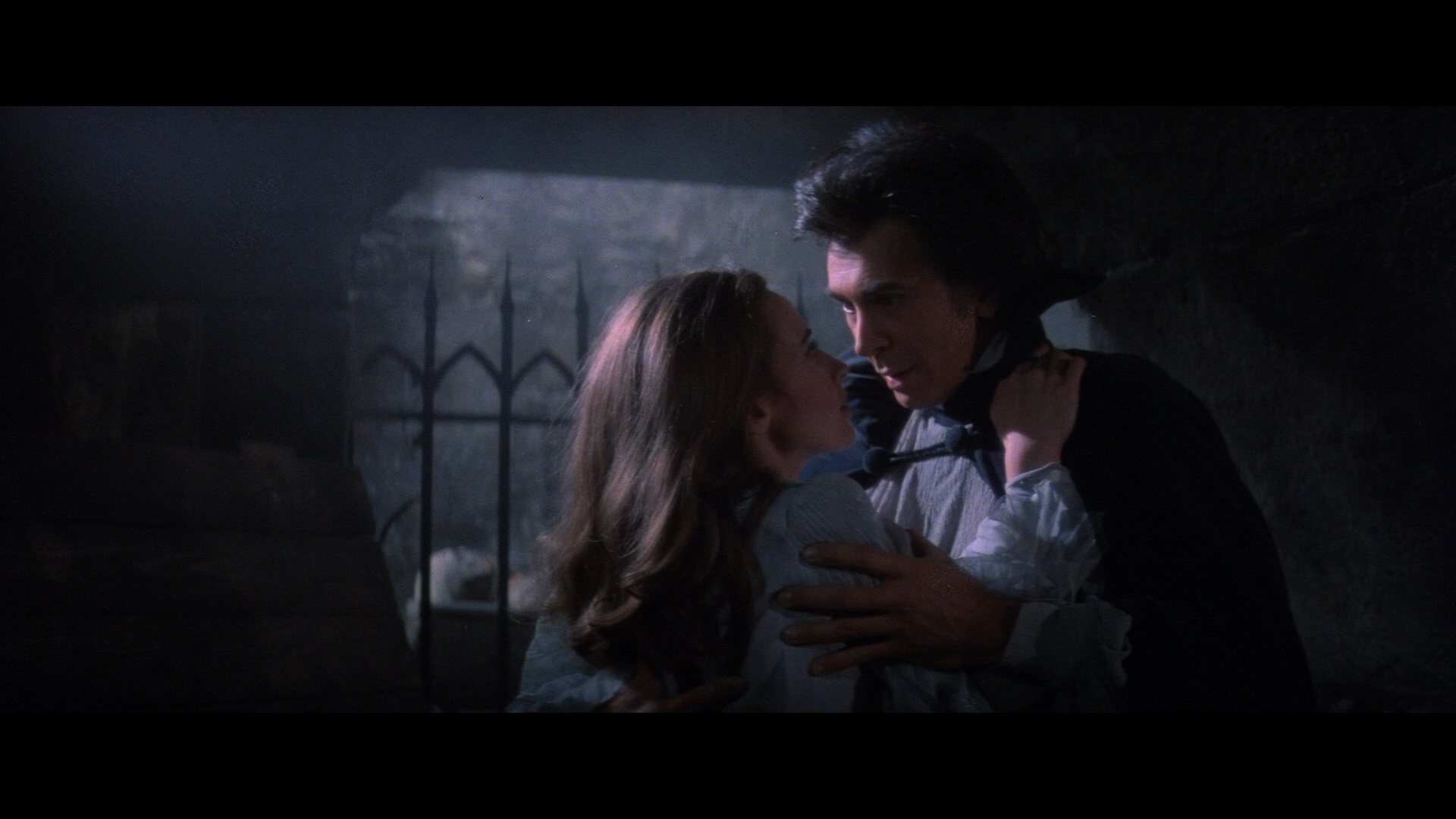 throats
throats 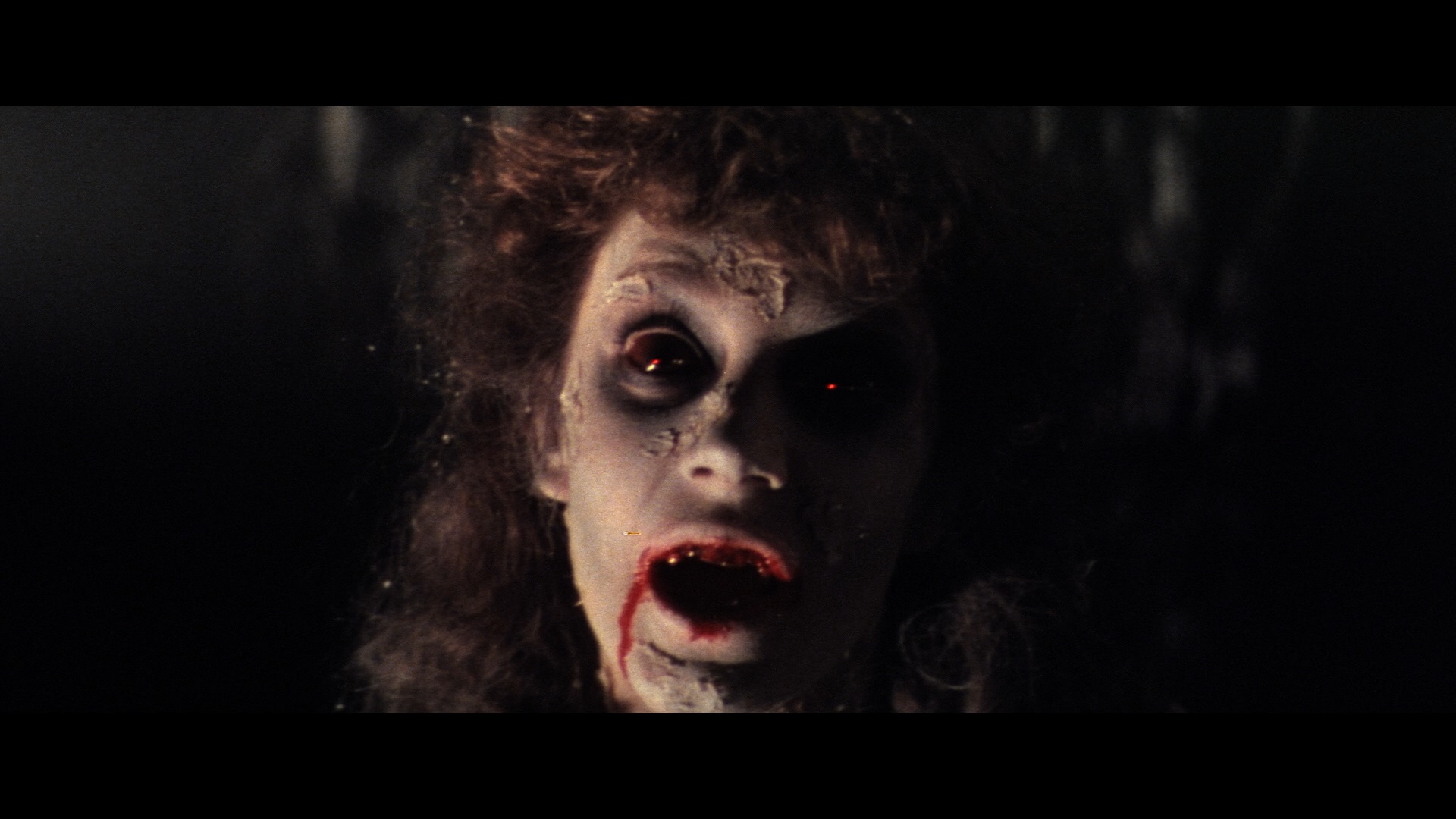 of the crew. In a beach cave the wolf transforms into Dracula (Langella) and is discovered by Mina van Helsing (Francis), who is staying nearby with her best friend, Lucy (Nelligan). The following day, the gruesome wreckage is investigated by Lucy's father, Dr. Seward (Pleasence), who runs the local asylum, and her fiancé, Jonathan Harker (Eve). That evening all of them welcome a new arrival, Dracula himself, who has just purchased the dilapidated and cobweb-filled Carfax Abbey nearby. Soon Mina becomes deathly ill due to lack of blood, and her father, Professor Abraham Van Helsing (Olivier), is called in for help when it becomes clear that something unearthly poses a threat to them all.
of the crew. In a beach cave the wolf transforms into Dracula (Langella) and is discovered by Mina van Helsing (Francis), who is staying nearby with her best friend, Lucy (Nelligan). The following day, the gruesome wreckage is investigated by Lucy's father, Dr. Seward (Pleasence), who runs the local asylum, and her fiancé, Jonathan Harker (Eve). That evening all of them welcome a new arrival, Dracula himself, who has just purchased the dilapidated and cobweb-filled Carfax Abbey nearby. Soon Mina becomes deathly ill due to lack of blood, and her father, Professor Abraham Van Helsing (Olivier), is called in for help when it becomes clear that something unearthly poses a threat to them all.  nightmarish sequences in all of vampire cinema with Van Helsing going underground to find his daughter in a terrifying state. The film's
nightmarish sequences in all of vampire cinema with Van Helsing going underground to find his daughter in a terrifying state. The film's  credentials couldn't be better, with director John Badham making this only his third feature film right on the heels of the massively popular Saturday Night Fever and screenplay duties going to W.D. Richter in the wake of his classic 1978 redo of Invasion of the Body Snatchers. The performances are all committed and offer interesting takes on their well-worn characters, with Nelligan making for a more substantial and headstrong interpretation than usual and even Eve making for one of the better Jonathan Harkers out there. Though her screen time is more limited, Francis also brings a striking physicality to her performance that really pays off in her final moments. It also doesn't hurt that the film has one of John Williams' very best scores, a majestic work that captures the morbid romanticism of the story perfectly from the swirling opening credits.
credentials couldn't be better, with director John Badham making this only his third feature film right on the heels of the massively popular Saturday Night Fever and screenplay duties going to W.D. Richter in the wake of his classic 1978 redo of Invasion of the Body Snatchers. The performances are all committed and offer interesting takes on their well-worn characters, with Nelligan making for a more substantial and headstrong interpretation than usual and even Eve making for one of the better Jonathan Harkers out there. Though her screen time is more limited, Francis also brings a striking physicality to her performance that really pays off in her final moments. It also doesn't hurt that the film has one of John Williams' very best scores, a majestic work that captures the morbid romanticism of the story perfectly from the swirling opening credits. 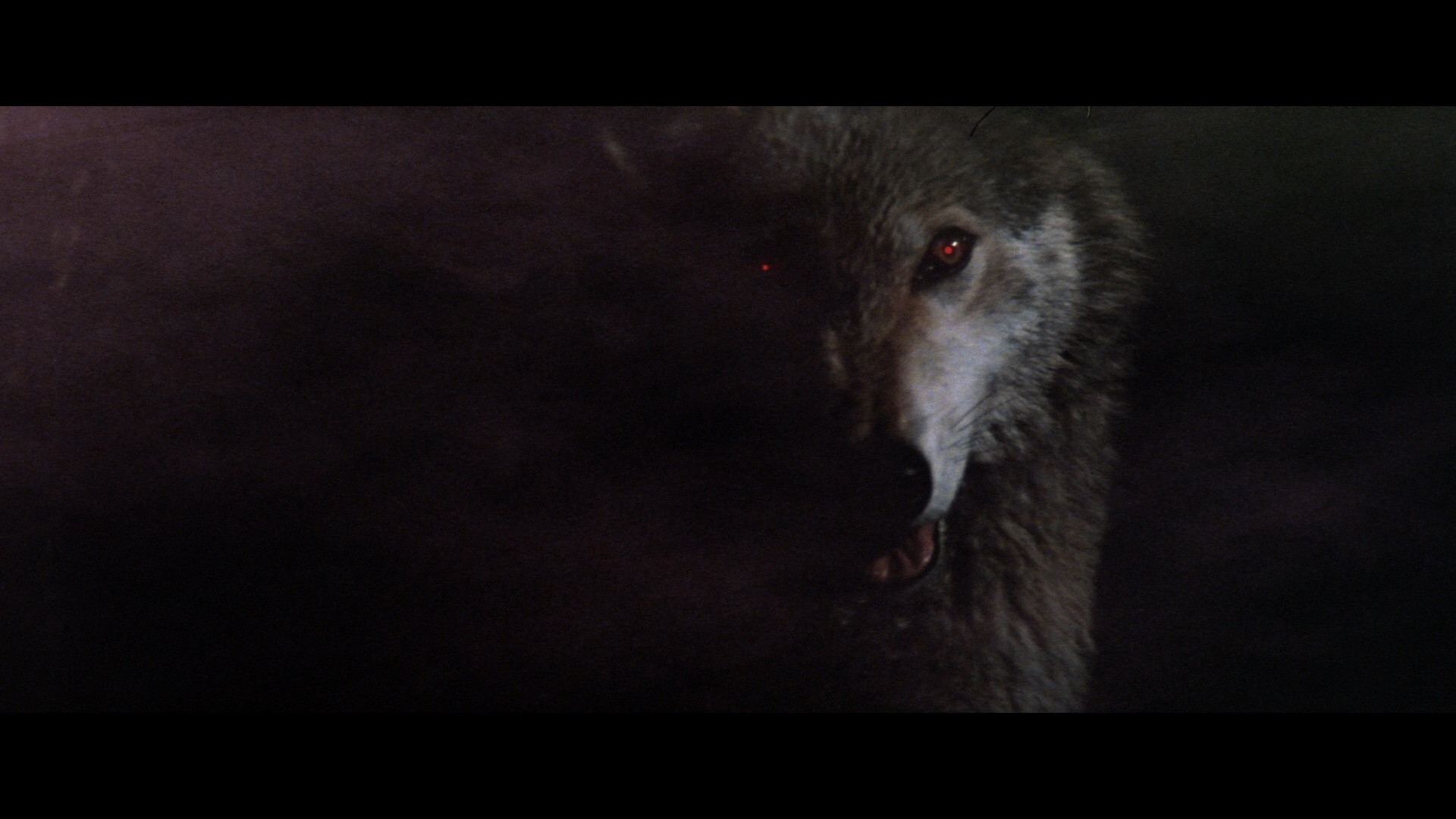 intention behind the transformation may have been interesting but the execution just ended up diminishing the film since the lighting
intention behind the transformation may have been interesting but the execution just ended up diminishing the film since the lighting 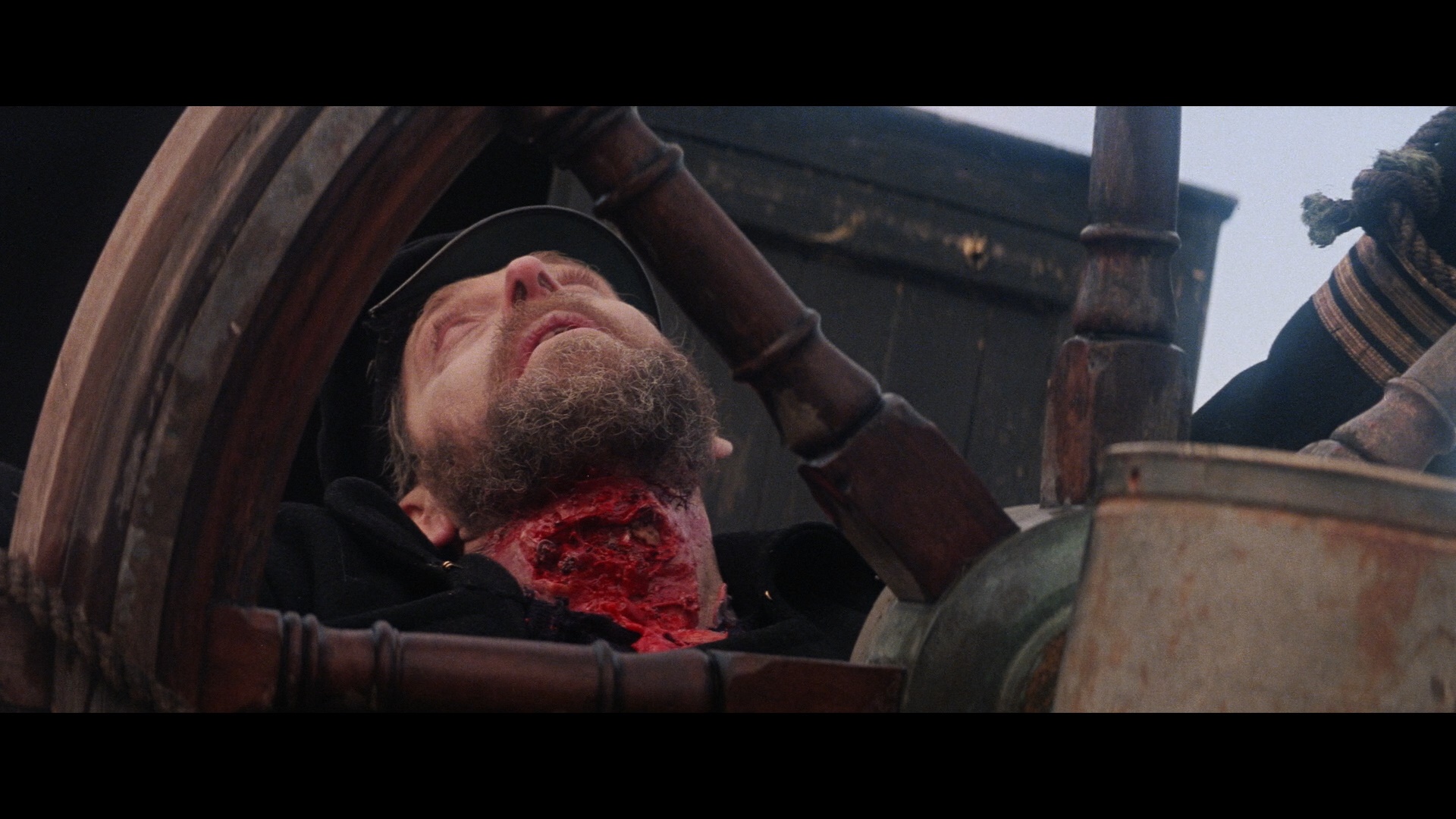 and production design choices don't even remotely look like they were intended to shot without full color. That same doctored color scheme was carried over when the film hit DVD, first bare bones in 1998 from Image Entertainment and then in 2004 as a special edition from Universal. That edition featured the theatrical trailer, a very good audio commentary with Badham, and a featurette, "The Revamping of Dracula" (39m11s) with Langella, Badham and Richter talking about the transition from stage to screen, some interesting anecdotes about Olivier (who was ailing at the time) and Pleasence (who deftly avoided having his part cut down), and the different conception of a vampire they wanted to convey.
and production design choices don't even remotely look like they were intended to shot without full color. That same doctored color scheme was carried over when the film hit DVD, first bare bones in 1998 from Image Entertainment and then in 2004 as a special edition from Universal. That edition featured the theatrical trailer, a very good audio commentary with Badham, and a featurette, "The Revamping of Dracula" (39m11s) with Langella, Badham and Richter talking about the transition from stage to screen, some interesting anecdotes about Olivier (who was ailing at the time) and Pleasence (who deftly avoided having his part cut down), and the different conception of a vampire they wanted to convey.  The first
The first  disc ports over the Badham commentary and "Revamping" featurette while adding a nice batch of new featurettes kicking off with a new Badham intro (1m10s) about the two color options and "King of My Kind" (32m18s), a new Badham interview about the film's genesis, his background in horror (including Night Gallery), the visual aesthetic of the "campy" Gorey designs versus the film, the adaptation process integrating some of the novel and rewriting most of the play's dialogue, Walter Mirisch's recruiting of John Williams, the trust he instilled in his actors, and the invaluable contributions of cinematographer Gilbert Taylor (The Omen). In "What Sad Music" (33m26s), Richter recalls getting the gig writing the screenplay, the interpretation of the character with a more tragic spin, the importance of Langella in getting the project off the ground, the switch to Edwardian England versus the usual Victorian era, the reason for omitting Transylvania as a location, and the prior cinematic vampires he and Badham used for reference. Then editor John Bloom (21m13s) goes into his own initial exposure to the material, his working process with Badham, the occasional "spirited" creative clashes on the set, and the challenges of editing at the time with frequent geographic issues to surmount. Assistant director Anthony Waye (15m54s) shares his own stories as well about the freezing cold sets, the execution of the memorable wall-crawling scene, and the occasional reshoots that had to be done. The logistical aspects of the shoot get covered by production manager Hugh Harlow (21m36s), who explains how Nelligan had to get speedily moved back and forth for a few weeks between the film and a West End production she was performing in at the time, as well as the friendly respect accorded to "Larry" Olivier due to his stature at the time. In "Dracula's Guest" (6m17s), first camera assistant Jim Alloway briefly talks about working with Taylor and his own
disc ports over the Badham commentary and "Revamping" featurette while adding a nice batch of new featurettes kicking off with a new Badham intro (1m10s) about the two color options and "King of My Kind" (32m18s), a new Badham interview about the film's genesis, his background in horror (including Night Gallery), the visual aesthetic of the "campy" Gorey designs versus the film, the adaptation process integrating some of the novel and rewriting most of the play's dialogue, Walter Mirisch's recruiting of John Williams, the trust he instilled in his actors, and the invaluable contributions of cinematographer Gilbert Taylor (The Omen). In "What Sad Music" (33m26s), Richter recalls getting the gig writing the screenplay, the interpretation of the character with a more tragic spin, the importance of Langella in getting the project off the ground, the switch to Edwardian England versus the usual Victorian era, the reason for omitting Transylvania as a location, and the prior cinematic vampires he and Badham used for reference. Then editor John Bloom (21m13s) goes into his own initial exposure to the material, his working process with Badham, the occasional "spirited" creative clashes on the set, and the challenges of editing at the time with frequent geographic issues to surmount. Assistant director Anthony Waye (15m54s) shares his own stories as well about the freezing cold sets, the execution of the memorable wall-crawling scene, and the occasional reshoots that had to be done. The logistical aspects of the shoot get covered by production manager Hugh Harlow (21m36s), who explains how Nelligan had to get speedily moved back and forth for a few weeks between the film and a West End production she was performing in at the time, as well as the friendly respect accorded to "Larry" Olivier due to his stature at the time. In "Dracula's Guest" (6m17s), first camera assistant Jim Alloway briefly talks about working with Taylor and his own  encounters with the cast including his own grappling with how to refer to Olivier and determining how much film to have ready for
encounters with the cast including his own grappling with how to refer to Olivier and determining how much film to have ready for 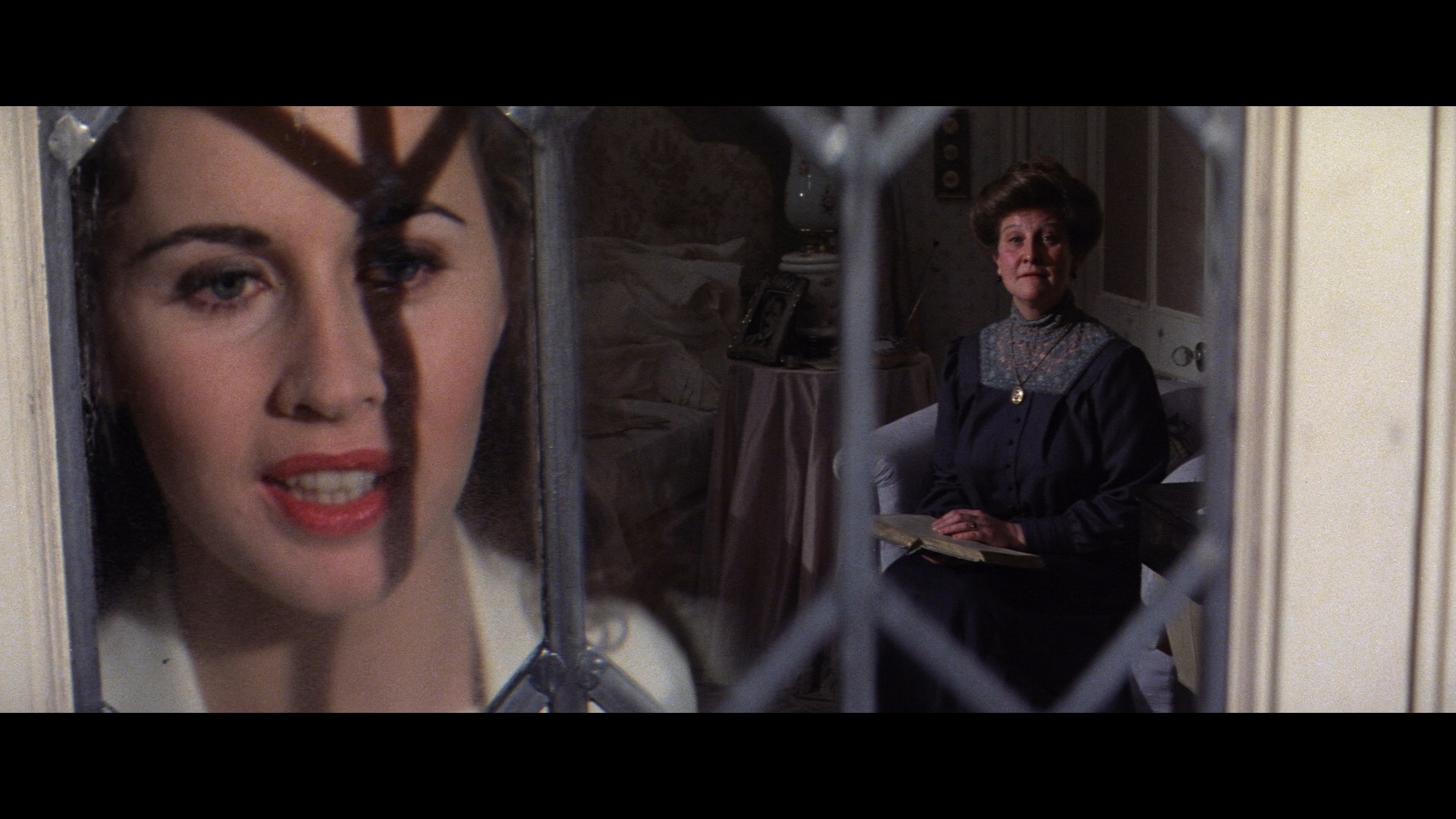 some of the more daunting scenes. Makeup artist Peter Robb-King (25m18s) also handles the technical stories here about coming up with the proper look for Langella diverging from the usual vampire approach and the rationale for changing the looks for the hair and makeup for some of the actors. Likewise, hair stylist Colin Jamison (4m36s) covers the hairpieces on the film including Nelligan, Olivier, and Langella's much-noted, Dirk Bogarde-inspired hairdo. On disc two you can find the theatrical trailer, an image gallery (8m27s), radio spots (1m33s), and a carryover of the same Badham intro, but the real keeper here (apart from the invaluable presentation of the full-color version itself) is a new audio commentary by Constantine Nasr, who's been on a serious tear with this coming on the heels of a string of exceptional Hammer and Universal horror supplements for Scream Factory. It's a terrific track that really lays out the circumstances behind the film (even touching lightly on some cast members who had a less pleasant time than others), the aspects of the Stoker novel and the play integrated here, the advantages of having a luxurious budget bestowed on a vampire film, the visual inspiration of Bavaria's King Ludwig, the value of Langella's performance, the much-noted acting tricks by Pleasence, the differences in some earlier drafts of the script, the rationale behind the color scheme(s), the history of the cast (including Langella vs. Raul Julia), Olivier's unique Dutch accent, the significance of that "sad music" line change, the fantasy approach that proves to be a stumbling block for some critics, and tons more. In addition to being a fine companion piece to his extensive look at the film for Little Shoppe of Horrors, it's a very persuasive argument for the film's importance and a perfect capper for a much-needed release that will hopefully restore the reputation of one of the finest American vampire films around.
some of the more daunting scenes. Makeup artist Peter Robb-King (25m18s) also handles the technical stories here about coming up with the proper look for Langella diverging from the usual vampire approach and the rationale for changing the looks for the hair and makeup for some of the actors. Likewise, hair stylist Colin Jamison (4m36s) covers the hairpieces on the film including Nelligan, Olivier, and Langella's much-noted, Dirk Bogarde-inspired hairdo. On disc two you can find the theatrical trailer, an image gallery (8m27s), radio spots (1m33s), and a carryover of the same Badham intro, but the real keeper here (apart from the invaluable presentation of the full-color version itself) is a new audio commentary by Constantine Nasr, who's been on a serious tear with this coming on the heels of a string of exceptional Hammer and Universal horror supplements for Scream Factory. It's a terrific track that really lays out the circumstances behind the film (even touching lightly on some cast members who had a less pleasant time than others), the aspects of the Stoker novel and the play integrated here, the advantages of having a luxurious budget bestowed on a vampire film, the visual inspiration of Bavaria's King Ludwig, the value of Langella's performance, the much-noted acting tricks by Pleasence, the differences in some earlier drafts of the script, the rationale behind the color scheme(s), the history of the cast (including Langella vs. Raul Julia), Olivier's unique Dutch accent, the significance of that "sad music" line change, the fantasy approach that proves to be a stumbling block for some critics, and tons more. In addition to being a fine companion piece to his extensive look at the film for Little Shoppe of Horrors, it's a very persuasive argument for the film's importance and a perfect capper for a much-needed release that will hopefully restore the reputation of one of the finest American vampire films around. 